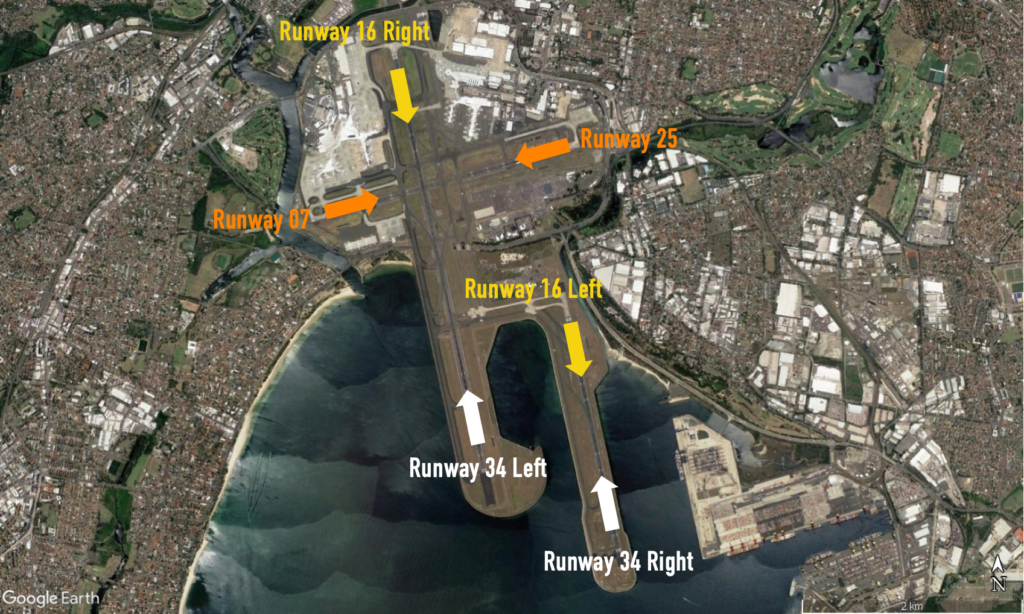Sydney Airport Runways
Sydney Airport has three runways. Each runway can be used in two directions. Because flight paths are linked to runways, the runway in use and the direction in which it is used determines which flight paths are used at any given time. When the runway in use changes, the flight paths in use will also change, and different sections of the community will experience overflights.
Each runway is referred to differently according to in which direction it is being used, as explained in the following video:
For example the main runway is known as Runway 34 Left (34L) when used in a northerly direction and Runway 16 Right (16R) when used in a southerly direction. Runway numbering reflects the runways’ orientation and correlates with degrees on a compass. For example, Runway 34L is 340 degrees.

The main runway 16R/34L (3.9km) is orientated north to south, as is a shorter parallel runway 16L/34R (2.4km long). The cross runway 07/25 (2.5km) is orientated east to west.
Heavy long-haul jets, such as Airbus 380s, and Boeing 747s, 777s and 787s will usually use Runway 34L/16R because it is the longest runway and they need the extra length.
Air traffic controllers select which runways to use based on wind direction, weather conditions, traffic volume and other factors. Because aircraft take-off and land into the wind for safety and performance reasons, the wind conditions at the airport are a key factor in these decisions. If the wind at the airport is calm or light, other factors are taken into account. These factors are discussed in more details in our Runway Selection page.
The Sydney Airport Long Term Operating Plan also informs runway selection decisions. Learn more about the Long Term Operating Plan and noise sharing.
Sydney Airport has a curfew that restricts both aircraft type and runway usage between the hours of 11:00 pm and 6:00 am. During this time departures use Runway 16R and arrivals 34L. Emergency medical flights are excepted and can use any runway required to expedite their journey.


